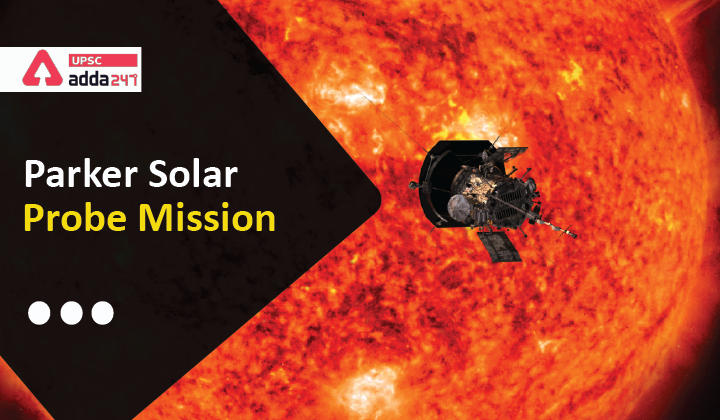Table of Contents
Parker Solar Probe Mission: Relevance
- GS 3: Science and Technology- developments and their applications and effects in everyday life.
Parker Solar Probe Mission: Context
- NASA’s Parker Solar Probe Mission becomes the first spacecraft in history to touch the sun. NASA’s Parker Solar Probe has now flown through the Sun’s upper atmosphere – the corona – and sampled particles and magnetic fields there.

Parker Solar Probe Mission: Key points
- Parker solar probe is making new discoveries that other spacecraft were too far away to see, including from within the solar wind – the flow of particles from the Sun that can influence us at Earth.
- In 2019, Parker discovered that magnetic zig-zag structures in the solar wind, called switchbacks, are plentiful close to the Sun.
- These measurements from the corona will be critical for understanding and forecasting extreme space weather events that can disrupt telecommunications and damage satellites around Earth.
- But how and where they form remained a mystery. Halving the distance to the Sun since then, Parker Solar Probe has now passed close enough to identify one place where they originate: the solar surface.
About Parker Solar Probe Mission
- Parker Solar Probe was launched in 2018 to explore the mysteries of the Sun by traveling closer to it than any spacecraft has done before.
- The NASA spacecraft spent more than three years winding its way by planets and creeping gradually closer to sun to learn more about the origin of the solar wind, which pushes charged particles across the solar system.
Parker Solar mission objective
- Since solar activity has a large effect on living on Earth, from generating auroras to threatening infrastructure like satellites, scientists want to know more about how the sun operates to better make predictions about space weather.
- It helped in estimating the location of Alfvén critical surface.
- Alfvén critical surface is a point, at a particular distance from the sun, where gravity and magnetic fields are no longer able to keep solar material close.
- It’s from that point where the solar wind flows away from the sun, never to return. The point of no return is called the Alfvén critical surface and scientists had not been able to measure exactly where it was, before Parker reached it.
- It will help explore aspects of the Sun-Earth system that directly affect life and society.
- Understanding where and how the components of the fast solar wind emerge could help scientists answer a longstanding solar mystery: how the corona is heated to millions of degrees, far hotter than the solar surface below.
Also Read:
| World Trade Organisation (WTO) | India Loses WTO Dispute over Sugar Subsidies | National Leprosy Eradication Programme | Coal Controller Organisation |
| Green Day Ahead Market | World Energy Outlook 2021 | 44th Constitutional Amendment Act | One Commodity One Exchange’ Policy |
| India International Science Festival (IISF) | Gaganyaan Space Mission | The Upcoming Crisis in Indian Federalism | Protests In Cuba And The Cuban Crisis |




 TSPSC Group 1 Question Paper 2024, Downl...
TSPSC Group 1 Question Paper 2024, Downl...
 TSPSC Group 1 Answer key 2024 Out, Downl...
TSPSC Group 1 Answer key 2024 Out, Downl...
 UPSC Prelims 2024 Question Paper, Downlo...
UPSC Prelims 2024 Question Paper, Downlo...
